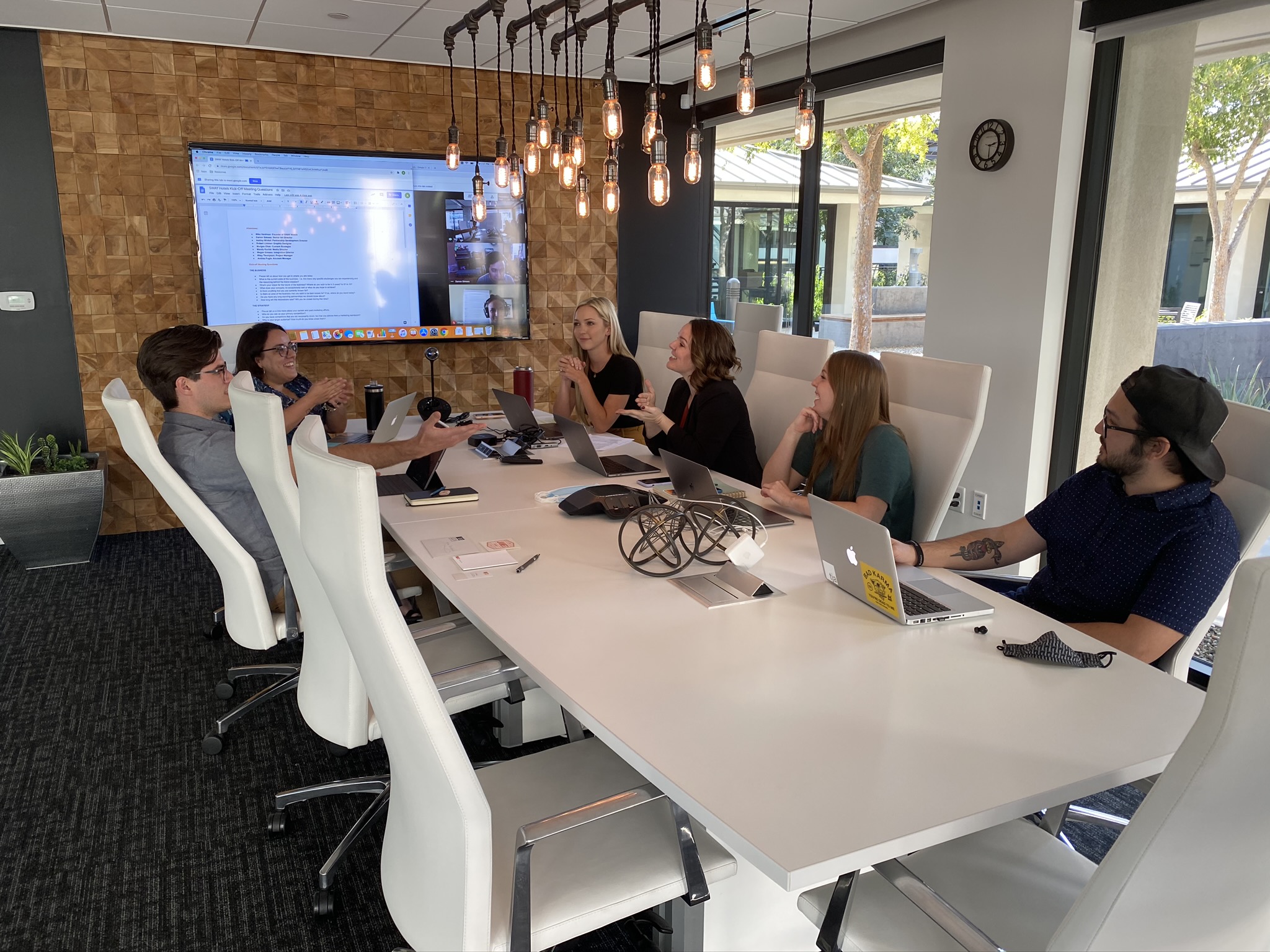Your project might be dead, but the work isn’t. When you’re moving a mile a minute, it’s easy to jump head first into your next project; however, we’re here to shed some light on the all-important post-mortem meeting.
A project post-mortem meeting is an opportunity for all people involved to get together and discuss how the project went. Was it a success? Did the outcome meet your goals? Was the project easy to accomplish? Were there any roadblocks or inefficiencies? What are the opportunities for improving in the future? These discussions are imperative for continued growth in any organization and improving the way your team works together.
One of the best ways to learn and grow is to review your work. This will allow you to look for opportunities to improve as well as identify things that worked well and should be replicated.
This article is specially outlining the process for marketing projects at both agencies and in-house teams. However, this method can be used for just about any project or event. A post-mortem is, at it’s simplest, a reflection on a given job, task, project or campaign. Therefore, they are applicable for agencies, in-house marketing teams, developers and more. If you had a goal, timeline, and/or budget, a post-mortem is right for you.
All team members involved in the given project should be involved in your post-mortem discussions, not just leadership. This encourages transparency across all departments and puts your team on the same page for the next project.
While it might not be needed every single project, it is important to do post-mortems for a variety of project types. No matter how swimmingly or how disastrously they went. Only holding meetings after large projects with multiple challenges will give you a partial data set, just as only conducting one after successful projects would as well. To see the big picture, make sure to analyze projects that have a range of outcomes.
-
- Successful / unsuccessful completion
- Meet the projects goals / did not meet them
- Profitable / unprofitable
- Large / medium / small
- Short / long term timelines
Post-mortems with and without the client (or key stakeholders) are beneficial. Inviting the client allows you to see how the project went in your client’s eyes. How you client perceived the results of the project is just as important as what the numbers reflect.
Internal meetings work well to discuss your team’s processes that the client may have not been aware of. When determining who attends, think about the goal of the analysis , any insight you may be looking for from your client, and/or any internal issues you want to identify.
Ideally, the moderator should be be someone that has knowledge of the project but was not actively involved. This allows them to steer the conversations without influencing the conversation with their opinions.
The moderator should remain objective and keep their personal opinions on the project to themselves. They should not be looking to influence the outcome of the meeting.
Invite all members of the project to the post-mortem. Depending on the size of the project, and the number of participants, these can last anywhere from 1 to 2 hours. Make sure all invitees understand the goal of the meeting, so they are prepared to offer honest feedback.
If you are inviting your client to the meeting, make sure you let them know what the goal of this meeting is and what to be prepared to discuss.
The moderator should send out a pre-meeting survey of questions to all members. Having a survey filled out before the discussion allows everyone attending to have a chance to really think through their answers and remember the details and outcomes of the project. This will also give the moderator time to review the results and come to the table prepared with themes and questions that need to be addressed.
The survey should ask a series of questions to help see where the team was aligned and not aligned.
Google Forms is a great tool for collecting survey responses, and presents the data visually, making it easy to look for outliers and patterns. Collecting responses at least two days in advance of the meeting allows the moderator time to compile the data and send it out to the team to review before the discussion.
Want a hand with starting your own post-mortem survey? Download our free example survey below. These sample questions will give you an idea of how to guide your team’s conversation with a constructive pre-meeting survey.
The moderator or a selected team member should gather all the supporting documents needed for the meeting. Consider including important client emails, goals, project estimates, project briefs, timelines, cost records, or other organization-specific documents.
When determining what documents are needed, think through how your company or your client measures success of a project. If the project timing was a big portion of the project, think about pulling the original timeline and any documentation on how well you stuck to the plan. If there were clear and measurable goals established, make sure the goals and the final results are included.
All attendees should come prepared to have an honest discussion. The focus of the meeting should not just be on specific details of this project but how you can use it as a lesson to improve. The moderator should stick to a clear and organized agenda when leading the meeting.
-
- Lay some ground rules and set expectations at the beginning of the meeting.
- Keep track of time! Keep the conversation moving and don’t allow off topic discussions.
- If a topic has been discussed for an extended period of time, ask yourself if the discussion is still productive. If not, step in and let the team know you it’s time to move on. If more specific discussion is needed, plan a follow-up meeting.
- Discourage side-bar conversations during the meeting. Everyone should be listening and discussing as group.
- Present discussion topics based on the survey responses.
- Look for action items. If a problem is identified, discuss what should have happened to prevent it or lessen its impact. These should be turned into clear action items to prevent the same mistakes. These findings are great opportunities to update an old process, add a new process, or teach team members a new skill.
- Look for the positives. Don’t just focus on what the team could do better. If a success is identified, consider how that could be replicated or turned in to an action item to repeat in a future project.
-
- Recap of project scope and goals (Moderator)
- Recap of project results (Account Manager)
- Review project hours (Project manager)
- Review survey answers (Moderator)
- Discussion (Team)
- Next Steps (Moderator)
Talking is great, but action is better. A selected team member should take clear meeting notes and determine a list of action items that developed from the discussion.
These action items should be distributed to the team and any other relevant people. We recommend a Google Doc listing all action items along with the assignee and due date. This document is checked regularly to monitor progress and follow-through.
Don’t just hold one post-mortem and call it done. Make sure you are consistently meeting after notable projects, discussing, learning, and implementing key findings. This will allow your team to continue to improve.
Now you have the basics to host your own project post-mortem. Get our free sample survey questions here and get started.




